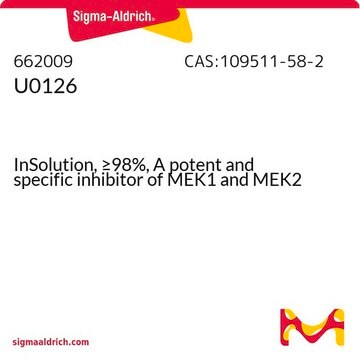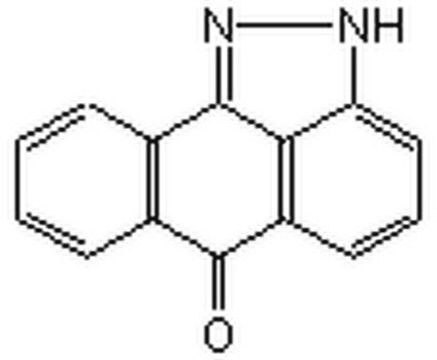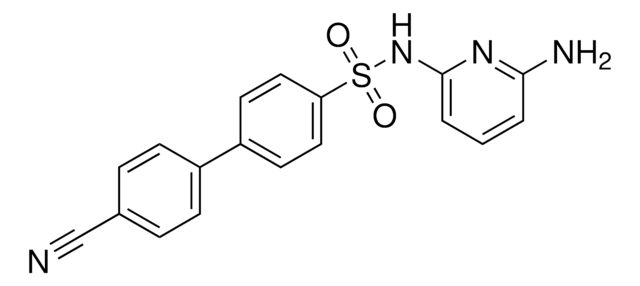559395
SB 203580, Hydrochloride
SB 203580, Hydrochloride, CAS 869185-85-3, is a water-soluble form of SB 203580. A highly potent, selective, ATP-competitive inhibitor of p38 MAP Kinase (IC₅₀ = 34 nM in vitro, 600 nM in cells).
Synonym(s):
SB 203580, Hydrochloride, 4-(4-Fluorophenyl)-2-(4-methylsulfinylphenyl)-5-(4-pyridyl)1H-imidazole, HCl, p38 MAP Kinase Inhibitor XVI, Hydrochloride
About This Item
Recommended Products
Quality Level
assay
≥95% (HPLC)
form
solid
manufacturer/tradename
Calbiochem®
storage condition
OK to freeze
desiccated (hygroscopic)
protect from light
color
bright yellow
solubility
water: 10 mg/mL
DMSO: soluble
shipped in
ambient
storage temp.
−20°C
InChI
1S/C21H16FN3OS.ClH/c1-27(26)18-8-4-16(5-9-18)21-24-19(14-2-6-17(22)7-3-14)20(25-21)15-10-12-23-13-11-15;/h2-13H,1H3,(H,24,25);1H
InChI key
WOSGGXINSLMASH-UHFFFAOYSA-N
General description
Biochem/physiol Actions
p38 MAP kinase
Warning
Reconstitution
Legal Information
signalword
Warning
hcodes
Hazard Classifications
Acute Tox. 4 Oral
Storage Class
11 - Combustible Solids
wgk_germany
WGK 3
flash_point_f
Not applicable
flash_point_c
Not applicable
Certificates of Analysis (COA)
Search for Certificates of Analysis (COA) by entering the products Lot/Batch Number. Lot and Batch Numbers can be found on a product’s label following the words ‘Lot’ or ‘Batch’.
Already Own This Product?
Find documentation for the products that you have recently purchased in the Document Library.
Our team of scientists has experience in all areas of research including Life Science, Material Science, Chemical Synthesis, Chromatography, Analytical and many others.
Contact Technical Service









